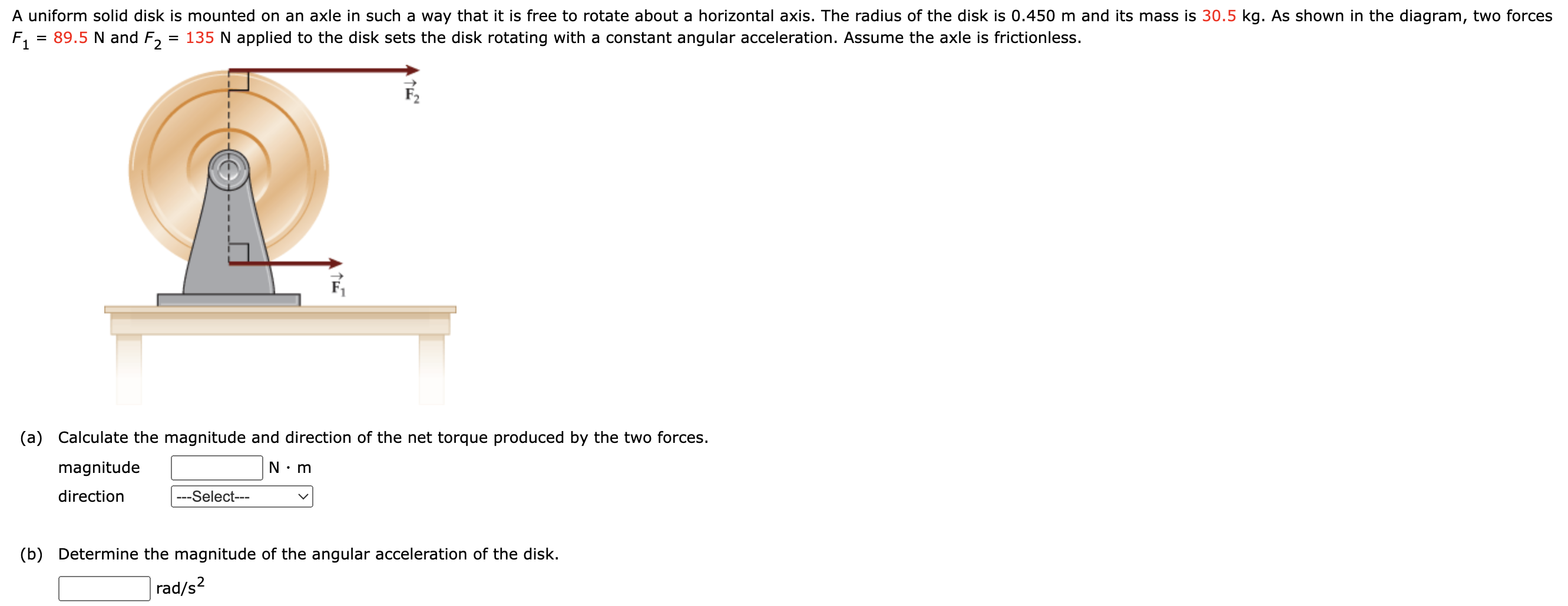A uniform solid disk is mounted on an axle in such a way that it is free to rotate about a horizontal axis. The radius of the disk is 0.450 m and its mass is 30.5 kg. As shown in the diagram, two forces F1 = 89.5 N and F2 = 135 N applied to the disk sets the disk rotating with a constant angular acceleration. Assume the axle is frictionless. (a) Calculate the magnitude and direction of the net torque produced by the two forces. magnitude N⋅m direction (b) Determine the magnitude of the angular acceleration of the disk. rad/s2
